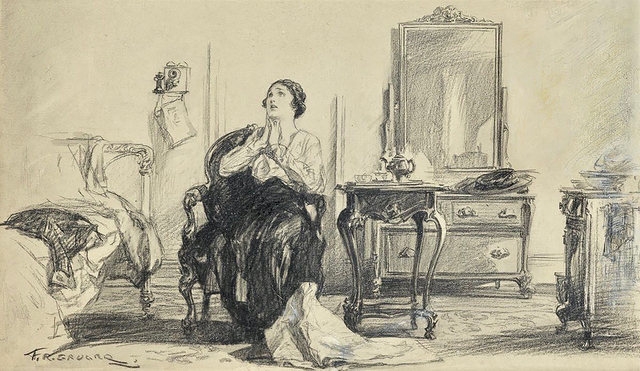This blog normally features graphic art. But it's true that Yr. Faithful Blogger has always been interested in architecture, so from time to time that is the subject of a post.
This post deals with Seattle's Smith Tower (L.C. Smith Building) that was completed in 1914. Its Wikipedia entry is
here.
For much of my early life, the Smith Tower was the tallest building in Seattle, tallest in the western USA, and it was a big deal to visit the observation deck and gaze down on the rest of downtown.
If memory serves, the same floor housed the Chinese Room. The Wikipedia entry states: "The Chinese Room, whose name was retired following the 2016 renovation, derived from the carved teak ceiling and blackwood furniture that adorned the room on opening. The room was furnished by the last Empress of China, Cixi. Furnishings include the famous Wishing Chair. The chair incorporates a carved dragon and a phoenix, which, when combined, portends marriage. According to folklore, any wishful unmarried person who sits in it would be married within a year."
The above photo was taken in the Chinese Room at a college fraternity Pledge Dance. That's me and my date. I'm not sure if we're seated in the chair just mentioned. Perhaps not, because we never married one another.
Wikipedia notes that the Smith Tower has 38 floors. But when I was young, it was claimed to have 42 stories: perhaps that included the beacon at the very top.
Architecturally, the Smith Tower is a blend of 1910 Chicago-style functionalism and historical detailing -- the latter in the form of a campanile style tower top.
Gallery
Early postcard view from Pioneer Square. Note the "42 Story" claim.
Under-construction view showing completed steelwork.
Partly sheathed. The building is not rectangular in plan-view.
Photo taken probably not long after completion.
Seattle skyline from around 1937. The Smith building towers over the rest of the city, rivaled only by the Northern Life Tower at the left of the image.
Seattle skyline view taken by me in June 2019. The Smith Tower is that tiny thing at the right of the photo.



















































